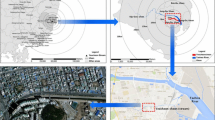Abstract
In discrete choice experiments, survey participants are often asked to consider stated cost, to themselves, as a source of funding of an environmental project. An open question remains whether participants would consider an additional source of funding, such as public or federal support. We examine the impact of federal funding availability on the marginal utility of management attributes and on respondents’ private willingness to pay (WTP) for watershed management plans. Our results suggest that availability of public funding does not significantly alter the preferred tradeoffs among management attributes for active management plans, but alters the utility difference, and therefore the WTP, between an active plan and the status quo alternative. A latent class model further suggests that classes with relatively similar preferences may nonetheless show heterogeneity in how availability of public funds affects WTP for management plans against the status quo, depending on individuals’ sociodemographic profiles and environmental attitudes. Public funding affects WTP through both crowding-in and crowding-out effects. Our results suggest that private responses to public funds may be more complex than previous studies on public goods have suggested, as public funds may neither attract contributions nor crowd out private support uniformly.

Similar content being viewed by others
Notes
Previous PV literature focused on evaluating alternative forms of the payment vehicle and whether these alternative forms yield consistent valuation outcomes. The general consensus in the PV literature has been to select a PV that has a plausible connection with the environmental resource being valued, is coercive and possesses a sense of “fair or equitable” share among respondents to minimize or avoid bias in valuation outcomes (Brookshire et al. 1980; Rowe et al. 1980; Greenley et al. 1981; Bateman et al. 1995; Jakobsson and Dragun 1996; Garrod and Willis 2000; Morrisson et al. 2000; Bateman et al. 2002; Carson and Groves 2007).
To incorporate heterogeneity in preferences, researchers have focused mostly on two approaches: the random parameters logit (RPL) model, also called mixed logit, and the latent class model (LCM). A RPL model assumes a continuous distribution for the random parameters across the sampled population and requires a behavioral assumption in terms of preference distribution. A latent class model (LCM) approach has a semi-parametric structure as it assumes a discrete distribution in which preference heterogeneity is captured by membership in distinct classes of the utility description and does not require any assumption on the distribution of parameters.
Management actions are listed in Table 1 and refer to those variables that set a level of “effort” to address watershed management concerns.
NRCS motivated and funded the initial study as part of a Rapid Watershed Assessment program for pre-screening funding priorities to address resource concerns across the state.
We note that the D-error for the design with federal funds was 0.11791, while for the same design with federal funds deleted the D-error was similar, at 0.11743.
The approach of financing public projects with partial funding from the federal government is familiar in the USA. Therefore, the authors present the results of the study on the assumption that adding federal funding as an additional attribute may be inconsequential to the complexity respondents faced as opposed to adding less familiar watershed management attributes. We are unable to differentiate any effect from complexity as distinct from an effect due to the federal funding attribute. However, complexity would be expected to affect most or all attribute coefficients, and we found no such wide-spread effect in preliminary models or those discussed below.
As applied here, this method involves sending: (a) an initial letter explaining the purpose of the survey and informing recipients that the survey will be delivered in a few days; (b) a cover letter with an initial copy of the survey; (c) a reminder postcard sent after a week to non-respondents; and (d) a second cover letter and another copy of the survey sent after two additional weeks to non-respondents.
We did not match zip codes with the exact boundary of the watershed using spatial variables because the company providing the mailing list did not have this facility at the time, but rather used zip codes that were at least 50 % in the watershed.
The weight for each stratum \(s = (\hbox {n}_{\mathrm{s}} /\hbox {N}) / (\hbox {r}_{\mathrm{s}} / \hbox {R})\), where \(\hbox {n}_{\mathrm{s}}\) is population in stratum s, N is total population from all strata, \(\hbox {r}_{\mathrm{s}}\) is number of completed surveys returned from stratum s, and R is total number of surveys returned from all strata.
Estimating the models separately using each subsample is equivalent to estimating the model with the pooled data but including utility parameters of interest interacted with the dummy for one of the split subsamples (DF in our study) because the sum of the log-likelihood of a model estimated with each subsample separately equals the log-likelihood of the model estimated with pooled data as we have done here.
Each participant faced a total of eight choice sets. We accounted for non-independence of responses to the eight choice sets from a single survey participant while estimating the latent class models by using the “cluster” option in NLOGIT 5.0 program (Greene 2012) to model econometric error.
It can be important to consider the difference, if any, in underlying error variances when comparing utility parameters between two subsamples, as the heteroskedasticity between the subsamples may confound any test of differences between the utility parameters and could mislead our conclusions (Hole 2006; DeShazo and Fermo 2002; Hensher et al. 1999; Swait and Louviere 1993). Preliminary models using Eq. (5) (and models based on Table 6 as well) would not converge, so we used the Swait and Louviere (1993) method to explore heteroskedasticity. Our explorations suggest that modeling heteroskedasticity does not affect our findings, particularly our qualitative conclusions reported below.
We initially examined a model which allowed only the status quo alternative, marginal utility of income, and all watershed management attributes (\(\hbox {SQ}_{\mathrm{p}}, \hbox {Cost}_{\mathrm{p}}\), and \(\hbox {X}_{\mathrm{mlp}}\)) to vary across the two subsamples (DF = 1,0) and we conducted a LR test and rejected the null hypothesis of no significant effect of the availability of federal dollars on the marginal utility of watershed management attributes. However, this result did not hold after including socio-demographic characteristics and environmental attitudes interactions with the status quo alternative in the model. The authors argue that such a specification that fails to account for heterogeneity in utility of the status quo suffers from omitted variables bias, and therefore we do not present results based on that simpler model.
Statistical significance was found for three variables, namely \(\hbox {Nonnative}_{\mathrm{H}}\,(\hbox {p} < 0.0895), \hbox {Bikepath}_{\mathrm{M}}\,(\hbox {p} < 0.0925)\), and \(\hbox {Trout}_{\mathrm{H}}\,(\hbox {p} < 0.0887)\) from among a total of 30 variables from 10 effects-coded management attributes. Three of 30 variables is consistent with the outcome expected by chance when using a 10 % significance level.
In the preliminary analysis, the authors used available income categories in the estimation process, which were not found to be significantly affecting the models. But the authors discovered that whether or not participants reported income significantly affected the models yielding the variable Incomemissing (see Table 1).
The marginal utility of a federal dollar is constant in Table 6 and of similar magnitude in both classes, and \(\hbox {FedFunds}_{\mathrm{p}}\) did not interact with \(\hbox {Cost}_{\mathrm{p}}\). Therefore, and considering space, we focus on the fixed crowding-in or crowding-out effects and Table 7 holds \(\hbox {FedFunds}_{\mathrm{p}}\) to zero. Using Table 6, readers can easily calculate how WTP would change for the two classes. For example, for federal funds of $200,000, the class WTPs would increase by $16.55 and $7.48, respectively.
We conducted a Wald test of equality of WTP values i.e., Ho: \(\hbox {WTP}^{\mathrm{F}}- \hbox {WTP}^{\mathrm{NF}} =0\) where \(\hbox {WTP}^{\mathrm{F}}\) is WTP value for a management plan relative to status quo when public funding is possible (DF = 1 and \(\hbox {FedFunds}_{\mathrm{p}}=0\)) and \(\hbox {WTP}^{\mathrm{NF}}\) is the corresponding WTP value when federal funding is not possible (DF = 0). Increased WTP indicates that there is a fixed crowding-in effect.
Of course, this reduction in WTP could be offset by a sufficiently large federal grant through the effect of the \(\hbox {FedFunds}_{\mathrm{p}}\) coefficient because, at the margin, an additional federal dollar does increase WTP.
We are mindful of the fact that the presence of the public funding attribute is part of the active plan, such that an econometrically equivalent model could have involved interactions between the amount of public support for a plan p (\(\hbox {FedFunds}_{\mathrm{p}}\)) and (1-SQ) where SQ represents the dummy for the status quo alternative. Thus, it is not so much that the utility of the status quo changes, but rather that a discrete effect on the utility of the active plans relative to the status quo changes. Our exposition follows more directly from the econometric model presented, which is standard within the literature.
References
Adamowicz WL, Boxall PC, Williams M, Louviere J (1998) Stated preferences approaches for measuring passive use values: choice experiments and contingent valuation. Am J Agric Econ 80(1):64–75
Andreoni J (1993) An experimental test of the public goods crowding-out hypothesis. Am Econ Rev 83(5):1317–1327
Bartholomew D, Knott M (1999) Latent variable models and factor analysis. Arnold, London
Bateman IJ, Langford IH, Turner RK, Willis KG, Garrod GD (1995) Elicitation and truncation effects in contingent valuation studies. Ecol Econ 12(2):161–179
Bateman IJ, Carson R, Day B, Hanemann M, Hanley N, Hett T, Jones Lee M, Loomes G, Mourato S, Ozdemiroglu E, Pearce D, Sugden R, Sawanson J (eds) (2002) Economic valuation with stated preference techniques. Edward Elgar, Cheltenham
Bergstrom JC, Boyle KJ, Yabe M (2004) Trading taxes vs. paying taxes to value and finance public environmental goods. Environ Resour Econ 28(4):533–549
Boxall PC, Adamowicz WL (2002) Understanding heterogeneity in preferences in random utility models: a latent class approach. Environ Resour Econ 23:421–446
Breffle W, Morey E, Thacher J (2008) Combining attitudinal and choice data to improve estimates of preferences and preference heterogeneity: a FIML, discrete-choice, latent class model. Working Paper, Department of Economics, University of Colorado
Brooks AC (2000) Public subsidies and charitable giving: crowding out, crowding in, or both? J Policy Analy Manag 19(3):451–464
Brooks AC (2003) Taxes, subsidies, and listeners like you: public policy and contributions to public radio. Publ Admin Rev 63(5):554–561
Brookshire DS, Randall A, Stoll JR (1980) Valuing increments and decrements in natural resource service flows. Am J Agric Econ 62(3):478–488
Carson RT, Groves T (2007) Incentive and informational properties of preference questions. Environ Resour Econ 37(1):181–210
Day B, Prades JP (2010) Ordering anomalies in choice experiments. J Environ Econ Manag 59(3):271–285
DeShazo JR, Fermo G (2002) Designing choice sets for stated preference methods: the effects of complexity on choice consistency. J Environ Econ Manag 44(1):123–143
Dillman DA (2007) Mail and internet surveys: the tailored design method 2007 update with new internet, visual and mixed-mode guide. Wiley, New Jersey
Garrod GD, Willis KG (2000) Economic valuation of the environment: methods and case studies. Edward Elgar, Cheltenham
Greene WH (2012) NLOGIT version 5: reference guide. Econometric Software Inc., New York
Greene WH, Hensher DA (2003) A latent class model for discrete choice analysis: contrasts with mixed logit. Transp Res Part B Method 37(8):681–698
Greenley DA, Walsh RG, Young RA (1981) Option value: empirical evidence from a case study of recreation and water quality. Q J Econ 96(4):657–673
Hanemann WM (1984) Welfare evaluations in contingent valuation experiments with discrete responses. Am J Agric Econ 66(3):332–341
Harman HH (1976) Modern factor analysis. University of Chicago Press, Chicago
Hensher D, Louviere J, Swait J (1999) Combining sources of preference data. J Econom 89(1–2):197–221
Hoehn JP (1991) Valuing the multidimensional impacts of environmental policy: theory and methods. Am J Agric Econ 73(2):289–299
Hoehn JP, Randall A (1989) Too many proposals pass the benefit cost test. Am Econ Rev 79(3):544–551
Hole AR (2006) Small-sample properties of tests for heteroskedasticity in the conditional logit model. Econ Bullet 3(18):1–14
Hungerman DM (2009) Crowd-out and diversity. J Public Econ 93(5–6):729–740
Jakobsson KM, Dragun AK (1996) Contingent valuation and endangered species: methodological issues and applications. Edward Elgar, Cheltenham
Johnston RJ, Weaver TF, Smith LA, Swallow SK (1995) Contingent valuation focus groups: insights from ethnographic interview techniques. Agric Res Econ Rev 24(1):56–69
Johnston RJ, Swallow SK, Weaver TF (1999) Estimating willingness to pay and resource tradeoffs with different payment mechanisms: an evaluation of a funding guarantee for watershed management. J Environ Econ Manag 38(1):97–120
Johnston RJ, Swallow SK, Allen CW, Smith LA (2002) Assessing tradeoffs and substitution in watershed management plans. Water Resour Res 38(7):4:1–4:13
Kafle A, Swallow SK, Smith EC (2011) Effects of public funding on local tradeoffs and willingness to pay (WTP) in a choice experiment: blackstone river watershed management. Zwick Center for Food and Resource Policy Working Paper Series No 6, Department of Agricultural and Resource Economics, University of Connecticut
Kaiser H (1958) The varimax criterion for analytic rotation in factor analysis. Psychometrika 23(3):187–200
Kaiser H (1960) The application of electric computers to factor analysis. Educ Psychol Meas 20:141–151
Kamakura W, Russell G (1989) A probabilistic choice model for market segmentation and elasticity structure. J Mark Res 26(4):379–390
Kline J, Wichelns D (1998) Measuring heterogeneous preferences and for preserving farmland and open space. Ecol Econ 26(2):211–224
Kontoleon A, Yabe M, Darby L (2005) Alternative payment vehicles in contingent valuation: the case of genetically modified foods. MPRA Paper No 1827, University Library of Munich, Germany
Kuhfeld WF (2005) Marketing research methods in SAS. SAS technical paper TS-722. Cary, NC
Manzoor SH, Straub JD (2005) The robustness of Kingma’s crowd-out estimate: evidence from new data on contributions to public radio. Public Choice 123:463–476
McFadden DL (1974) Conditional logit analysis of qualitative choice behavior. In: Zarembka P (ed) Frontiers in econometrics. Academic Press, New York
Milan L, Whittaker J (1995) Application of the parametric bootstrap to models that incorporate a singular value decomposition. Appl Stat 44(1):31–49
Mitchell RC, Carson RT (1989) Using surveys to value public goods: the contingent valuation method. Resources for the Future Press, Washington
Morey E, Thatcher J, Breffle W (2006) Using angler characteristics and attitudinal data to identify environmental preferences classes: a latent class model. Environ Resour Econ 34(1):91–115
Morrisson MD, Blamey RK, Bennett JW (2000) Minimizing payment vehicle bias in contingent valuation studies. Environ and Resour Econ 16(4):407–422
Mulaik S (1972) The foundations of factor analysis. McGraw-Hill, New York
Nunes PALD, Travisi CM (2009) Comparing tax and tax reallocation payments in financing rail noise abatement programs: results from a stated choice valuation study in Italy. Environ Resour Econ 43(4):503–517
Oehlert GW (1992) A note on the delta method. Am Stat 46(1):27–29
Opaluch JJ, Swallow SK, Weaver T, Wessells CW, Wichelns D (1993) Evaluating impacts from noxious facilities: including public preferences in current siting mechanisms. J Environ Econ Manag 24(1):41–59
Payne AA (1998) Does the government crowd-out private donations? new evidence from a sample of non-profit firms. J Public Econ 69(3):323–345
Payne AA (2001) Measuring the effect of federal research funding on private donations at research universities: is federal research funding more than a substitute for private donations? Int Tax Public Financ 8(5–6): 731–751
Provencher B, Baerenklau K, Bishop R (2002) A finite mixture logit model of recreational angling with serially correlated random utility. Am J Agric Econ 84(4):1066–1075
Roeder K, Lynch K, Nagin D (1999) Modeling uncertainty in latent class membership: a case study in criminology. J Am Stat Assoc 94(447):766–776
Rowe RD, D’Arge R, Brookshire DS (1980) An experiment on the economic value of visibility. J Environ Econ Manag 7(1):1–19
Scarpa R, Willis KG, Acutt M (2005) Individual-specific welfare measures for public goods: a latent class approach to residential customers of Yorkshire water. In: Koundouri P (ed) Econometrics informing natural resource management. Edward Elgar, Cheltenham
Smith TM (2003) The effect of NEA grants on the contributions to non-profit dance companies. J Arts Manag Law Soc 33(2):98–113
Smith TM (2007) The impact of government funding on private contributions to non-profit performing arts organizations. Ann Public Coop Econ 78(1):137–160
Steinberg R (1991) Does government spending crowd out donations? Interpreting the evidence. Ann Public Coop Econ 62(4):591–612
Stevens TH, DeCoteau NE, Willis CE (1997) Sensitivity of contingent valuation to alternative payment schedules. Land Econ 73(1):140–148
Swait JR (1994) A structural equation model of latent segmentation and product choice for cross-sectional revealed preference choice data. J Retail Consume Serv 1(2):77–89
Swait JR, Louviere J (1993) The role of the scale parameter in the estimation and comparison of multinomial logit models. J Mark Res 30(3):305–314
Swallow SK, McGonagle MP (2006) Public funding of environmental amenities: contingent choice using new taxes or existing revenues for coastal land conservation. Land Econ 82(1):56–67
Tarlov AR, Ware JE, Greenfield S, Nelson EC, Perrin E, Zubkoff M (1989) The medical outcomes study: an application of methods for monitoring the results of medical care. J Am Med Assoc 262(7):925–930
Titterington DM, Smith AFM, Makov UE (1985) Statistical analysis of finite mixture distributions. Wiley, New York
Wedel M, Kamakura W (2000) Market segmentation: conceptual and methodological foundations. Kluwer, Boston
Acknowledgments
The U.S. Department of Agriculture (USDA) Natural Resources Conservation Service (NRCS) provided partial funding, with additional funding from the Agricultural Experiment Station at the University of Rhode Island, the DelFavero Faculty Fellowship at University of Connecticut, and the UConn-Storrs Agricultural Experiment Station. The authors are grateful to Christian Vossler and anonymous referees for their invaluable critiques of the paper.
Author information
Authors and Affiliations
Corresponding author
Rights and permissions
About this article
Cite this article
Kafle, A., Swallow, S.K. & Smith, E.C. Does Public Funding Affect Preferred Tradeoffs and Crowd-In or Crowd-Out Willingness to Pay? A Watershed Management Case. Environ Resource Econ 60, 471–495 (2015). https://doi.org/10.1007/s10640-014-9782-z
Accepted:
Published:
Issue Date:
DOI: https://doi.org/10.1007/s10640-014-9782-z




